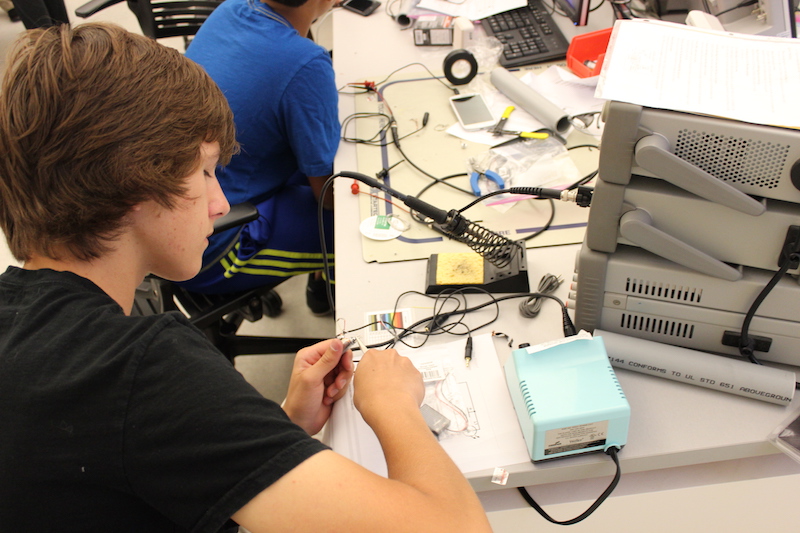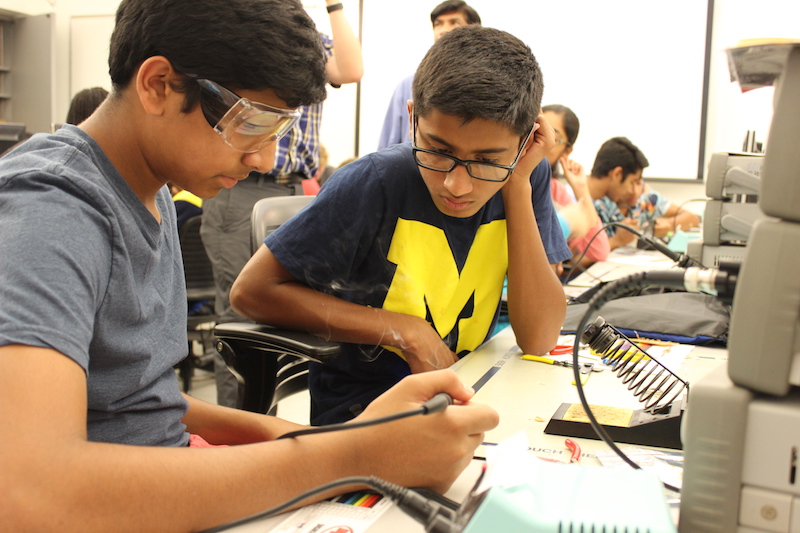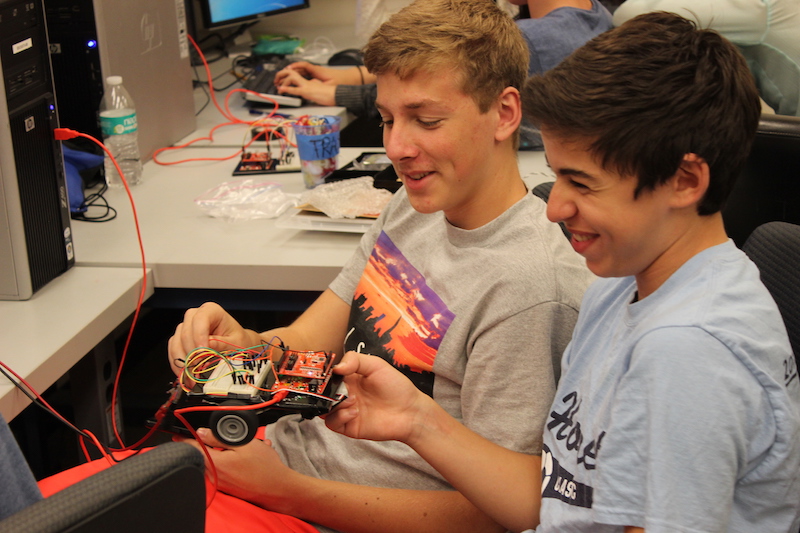Electrify Tech Camps offer high schoolers an electrifying summer
In ECE’s first-ever Electrify Summer Tech Camps, students gathered for three five-day sessions to learn the basics of electrical and computer engineering.
High schoolers took over the EECS building this July, filling the hallways and labs as they designed circuits, built holograms, and whirred around on segways. In ECE’s first-ever Electrify Summer Tech Camps, students from near and far gathered for three five-day sessions to learn the basics of electrical and computer engineering.
The three camps each focused on a different field of study: power and energy, optics and photonics, and wireless sensors. The participants explored the basic concepts driving these different technologies through lab work, group projects, and lectures from one of ECE’s skilled professors. Profs. Heath Hofmann (Power Up), Mohammed Islam (Light It Up), and Jamie Phillips (Sense It) planned and oversaw the camps.
During their time in the labs, students got to work with ECE’s top-flight equipment, under the guidance of the professors and their team of grad student instructors. Everyone designed or built a final project that put the different concepts from the week into practice, and had the chance to show off what they’d done to their parents at the end of the week.

 Enlarge
Enlarge
But it wasn’t all work and no play – students were given a view of campus during plenty of recreation breaks. The Big House was a popular destination, as was the Wilson Student Team Center. The Power Up campers made it to the U-M Solar Car station on the very same day their new 2015 car, Aurum, was unveiled!
Electrify’s goal is to expose high school students to ECE as a fun, rewarding field.
“This camp was designed to give the students experience with building things with electronics,” Jamie says. “At that high school age you don’t get a lot of opportunities to actually build things or deal with electronics. I wanted to give students, around the time when they’re thinking ‘hey what to I want to do when I graduate,’ an opportunity to open their eyes to this great world.”
The faculty leading the camps also sought to convey the breadth of ECE and how many different areas of work it opens up.
“I believe options are the reason we do all of this,” Mohammed told his campers. “By having more options you can choose what you want to do – from working in the auto industry, to forming a startup, it makes the hard work worth it.”
After a successful first year, faculty look forward to future camps and all the possibilities they bring. For information on signing up for 2016 camps, check out our Electrify page.
Power Up: The Power and Energy Tech Camp
Students at Prof. Heath Hofmann’s Power Up camp learned how to design systems using different types of energy, as well as the basics of circuit design and motors. From hand-powered systems to simple solar setups, the course gave a full look at the challenges and benefits these different types of power provide. As a capstone project, the class got to build their own simple solar-powered circuit that lit up a small LED light.









Download these photos on Flickr
Light It Up: The Optics and Photonics Tech Camp
Prof. Mohammed Islam’s Light It Up camp guided students through foundational concepts in optics, and gave them a look at many different applications. Students worked with lasers, solar cells, LEDs, and holograms in the computer showcase lab – turning off all the lights, when needed. Central to the course was ongoing work on an all-in-one heart rate monitor and oximeter, built with LEDs, detectors, and a basic circuit.










Sense It: The Wireless Sensors Tech Camp
The final camp, Prof. Jamie Phillips’ Sense It, taught students all about electronics, sensors, and the work that goes into designing a complete system catered to a certain task. One of the key examples referred to throughout the week was the complex system running a smart phone, and students even got to use their phones to manipulate microcontrollers via Bluetooth. Later, they used programmed Arduino devices to make music, launch catapults, and operate a system of their own invention. They worked on their invention for two days, and had the chance to present their results – ranging from automatic chopsticks to a light-sensing trash can alarm.













 MENU
MENU